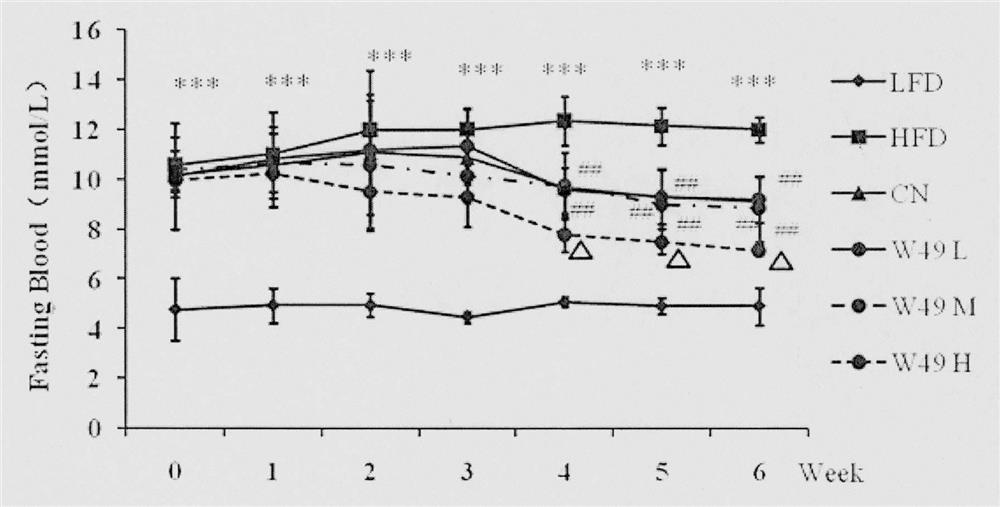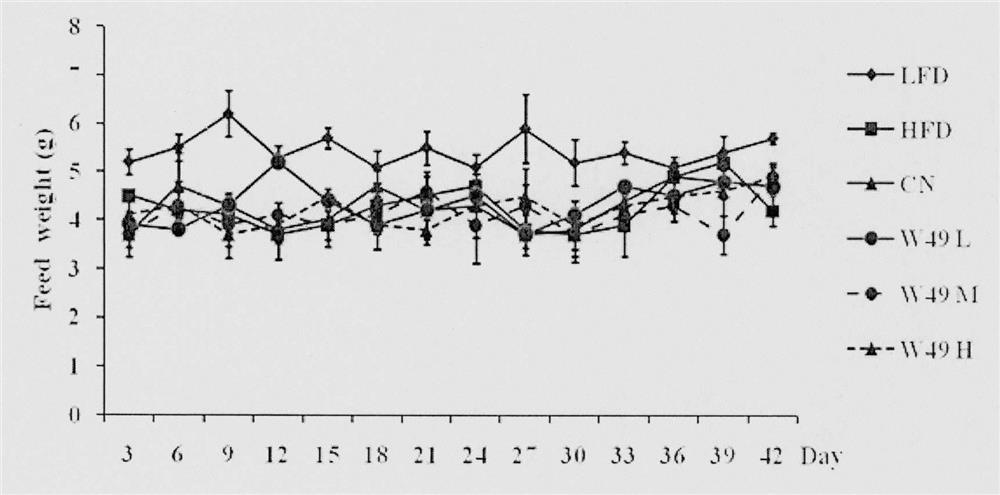Flavone skeleton transition derivative and medical application thereof
A technology of skeleton transition and derivatives, applied in the field of medicine, can solve problems such as difficulty in lasting curative effect
- Summary
- Abstract
- Description
- Claims
- Application Information
AI Technical Summary
Problems solved by technology
Method used
Image
Examples
Embodiment 1
[0013] Embodiment 1: the preparation method of compound 1
[0014]
[0015] Weigh 5 g of a commercially available pharmaceutical intermediate (CAS 110683-23-3) and suspend and disperse it in 30 ml of dichloromethane, add 6 ml of triethylamine dropwise with stirring in an ice bath, and then add 3.5 g of 4-dimethylaminopyridine. Weigh 12g in a small beaker, dissolve it completely with 10ml of dichloromethane, slowly add di-tert-butyldicarbonate solution in dichloromethane (12g / 10ml) dropwise into the reaction flask, and stir the reaction solution at 30°C after the dropwise addition 12h. After the TLC monitoring reaction was complete,
[0016] Add 3 mol / L hydrochloric acid solution to the reaction solution until the solution pH=3-4. The organic layer was washed three times with water until the aqueous layer was colorless, and the organic layer was concentrated to obtain a black paste. A large amount of methanol was added to suspend the paste, and a large amount of yellow pr...
Embodiment 2
[0018] Embodiment 2: the preparation method of compound 2
[0019]
[0020] Weigh 550 mg of potassium hydroxide and disperse it in 60 ml of methanol solution, add 1.1 g of compound 1 in batches while stirring in an ice bath, stir for 10 minutes, weigh, and slowly add 1 g of diacetoxyiodobenzene in portions under ice bath. After the addition, the reaction temperature was adjusted to 25°C, and the reaction was carried out for 3 hours. After the completion of the reaction was monitored by TLC, methanol was spin-dried to remove, redissolved with ethyl acetate, and the organic layer was washed three times with water; the organic layer was dried, filtered, and concentrated to obtain compound 2 as a white solid with a yield of 82%. 1 H-NMR (400MHz, CDCl 3 ) δ8.16(1H, d, J=6.8Hz), 7.42(1H, s), 7.25(1H, m), 7.04(1H, m), 3.35(3H, s, OCH3), 3.32(3H, s , OCH3), 3.26 (3H, s, OCH3), 1.78 (9H, s), 1.54 (9H, s).
Embodiment 3
[0021] The preparation method of embodiment 3 compound 3
[0022]
[0023] Add appropriate amount of acetone to dissolve 1 g of compound 2, keep stirring at 30°C for reaction, then add 10 ml of concentrated hydrochloric acid, and react for 5 h. After the TLC monitoring reaction was complete,
[0024] Add 20ml of ethyl acetate to the reaction solution, a large amount of flocculent precipitates appeared, filter with suction, and wash the filter cake with water to obtain compound 3 as a bright yellow solid. Yield 71% 1 H-NMR (400MHz, CDCl 3 )δ7.76(1H, s), 7.60(1H, d, J=8.04Hz), 7.22(1H, m), 7.06(1H, d, J=7.64Hz), 1.68(9H, s).
PUM
 Login to View More
Login to View More Abstract
Description
Claims
Application Information
 Login to View More
Login to View More - R&D
- Intellectual Property
- Life Sciences
- Materials
- Tech Scout
- Unparalleled Data Quality
- Higher Quality Content
- 60% Fewer Hallucinations
Browse by: Latest US Patents, China's latest patents, Technical Efficacy Thesaurus, Application Domain, Technology Topic, Popular Technical Reports.
© 2025 PatSnap. All rights reserved.Legal|Privacy policy|Modern Slavery Act Transparency Statement|Sitemap|About US| Contact US: help@patsnap.com



